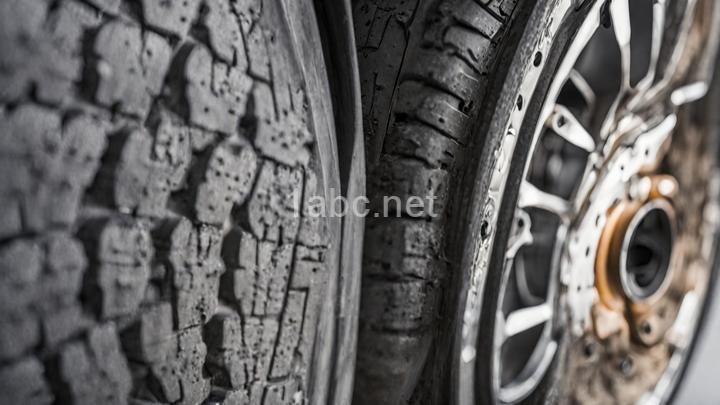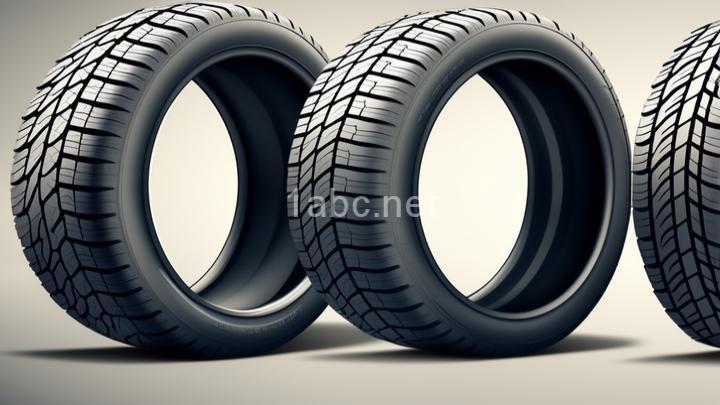The Importance of Regularly Checking Tire Tread Depth

Introduction:
Hey there, fellow drivers! Have you ever stopped to think about just how important your tires are? They may not be the flashiest part of your car, but they play a crucial role in keeping you safe on the road. One aspect of tire maintenance that often gets overlooked is checking the tread depth. In this blog post, we're going to dive deep into the world of tire tread depth and explore why it's so essential to regularly check it. So buckle up and get ready to learn something new!
I. Understanding Tire Tread Depth:
Before we go any further, let's start by understanding what tire tread depth actually means. Simply put, it refers to the depth of the grooves in your tire's tread pattern. These grooves serve a vital purpose - they help your tires maintain traction and grip on the road. When the tread depth starts to wear down, your tires become less effective at gripping the road, which can lead to some serious consequences.
Now, you might be wondering, why is tire tread depth so important? Well, imagine driving on a rainy day with bald tires. As the rainwater collects on the road, your tires won't be able to channel it away effectively, leading to a higher risk of hydroplaning. Not a situation you want to find yourself in, right? That's where tire tread depth comes into play - it helps to ensure that your tires have the necessary grip to keep you safe, no matter the weather conditions.
II. The Benefits of Regularly Checking Tire Tread Depth:
Now that we understand the significance of tire tread depth, let's delve into the benefits of regularly checking it. One of the biggest advantages is proactive maintenance. By taking the time to inspect your tire tread depth on a regular basis, you can catch any potential issues early on, before they escalate into something more dangerous.
Maintaining proper tire tread depth also improves safety on the road. When your tires have sufficient tread, they can better navigate corners, stop quickly when needed, and provide better overall stability. This means you'll have more control over your vehicle and reduce the risk of accidents. So, taking a few minutes to check your tire tread depth could make a world of difference in your safety on the road.
Additionally, regularly checking tire tread depth can help prevent hydroplaning. As mentioned earlier, hydroplaning occurs when your tires can't effectively channel away water. By ensuring you have adequate tread depth, you'll be better equipped to handle wet road conditions and reduce the chances of hydroplaning. So, by taking a proactive approach to tire maintenance, you'll be keeping yourself and others safe.
III. How to Measure Tire Tread Depth:
Now that we understand why checking tire tread depth is crucial, let's discuss how to measure it. Don't worry, it's not as complicated as it may seem! There are a few different methods you can use, but we'll cover two of the most popular ones: the penny test and the dedicated tread depth gauge.
To perform the penny test, grab a penny and insert it into one of the grooves on your tire with Lincoln's head facing down. If you can see the top of Lincoln's head, it's time to consider replacing your tires. However, if his head is partially covered, your tread depth is still within a safe range.
For a more accurate measurement, you can use a dedicated tread depth gauge. These handy tools are specifically designed to measure tire tread depth and can be found at most auto supply stores. Simply place the gauge into the groove of your tire and read the measurement displayed. It's that easy!
Pro tip: When measuring tire tread depth, make sure to check multiple places on each tire to get a comprehensive overview of their condition. Uneven wear patterns could be a sign of other underlying issues that may need to be addressed.
IV. Signs of Worn-Out Tires:
While measuring tire tread depth is an excellent way to assess the condition of your tires, there are also some visual cues you can look out for. These signs can indicate that your tires are worn out and in need of replacement.
Firstly, keep an eye out for bald spots on your tires. These are areas where the tread has completely worn down, leaving only smooth rubber. Bald spots can significantly impact the grip and traction of your tires, increasing the chances of skidding or losing control.
Cracks in the sidewall of your tires are another sign of wear. These cracks can weaken the structure of the tire, making it more susceptible to blowouts or punctures. If you notice any cracks, it's time to start shopping for new tires.
Uneven wear patterns are also worth paying attention to. If one side of the tire is more worn than the other, it could indicate a misalignment issue or improper tire inflation. Addressing these issues promptly can help extend the lifespan of your tires and ensure optimal performance.
V. When to Replace Tires:
Now that we know how to measure tire tread depth and identify signs of wear, let's discuss when it's time to replace your tires. While there are legal requirements for minimum tread depth, it's important to remember that these are just the bare minimum. It's always a good idea to replace your tires before they reach these limits to ensure optimal safety on the road.
In general, experts recommend replacing tires when the tread depth reaches 4/32 of an inch. However, if you live in an area with frequent rain or snow, it's recommended to replace your tires when the tread depth reaches 6/32 of an inch for improved traction in challenging weather conditions.
When it comes to selecting new tires, there are a few factors to consider. First and foremost, think about your driving habits and the type of weather conditions you typically encounter. If you frequently drive on wet or snowy roads, investing in tires with excellent traction capabilities is a wise choice. Additionally, consider your budget and personal preferences, such as noise level and fuel efficiency.
Conclusion:
Congratulations, you've made it to the end of this tire-tastic journey! We've covered everything from understanding tire tread depth to measuring it and identifying signs of worn-out tires. The key takeaway here is that regularly checking your tire tread depth is an essential part of vehicle maintenance. By doing so, you'll be taking proactive steps to ensure your safety on the road.
So, my fellow drivers, I urge you to take a few minutes today to check your tire tread depth. It's a small investment of your time that can have a big impact on your safety. Remember, proper tire maintenance is not only about keeping your car in top shape, but it's also about protecting yourself and those around you. Stay safe out there, and happy driving!
FREQUENTLY ASKED QUESTIONS
Why is it important to regularly check tire tread depth?
Regularly checking tire tread depth is important for several reasons. First and foremost, adequate tire tread depth is crucial for maintaining good traction on the road. As tires wear down over time, their ability to grip the road surface decreases, especially in wet or slippery conditions. This can increase the risk of skidding or hydroplaning, making it harder to control the vehicle and potentially leading to accidents.Secondly, checking tire tread depth can also help identify potential tire wear patterns or issues with the suspension or alignment of the vehicle. Uneven or excessive tire wear can indicate problems that need to be addressed, such as misalignment or improper tire inflation. By catching these issues early on, you can prevent further damage to your tires and improve overall vehicle performance.
Furthermore, maintaining proper tread depth can also extend the lifespan of your tires. When tires are worn down beyond the recommended tread depth, their ability to dissipate heat and handle heavy loads diminishes. This can result in increased tire wear, reduced fuel efficiency, and the need for premature tire replacement. Regularly checking the tread depth allows you to monitor the condition of your tires and take appropriate action, such as rotating or replacing them when necessary.
In conclusion, regularly checking tire tread depth is important for safety, vehicle performance, and cost-effectiveness. By ensuring adequate tread depth, you can enhance traction, identify potential issues, and prolong the lifespan of your tires. Make it a habit to inspect your tire tread regularly and address any concerns promptly to keep yourself and others safe on the road.
How often should I check my tire tread depth?
It is recommended to check your tire tread depth at least once a month. Tire tread depth plays a crucial role in maintaining traction and grip on the road, especially in wet or slippery conditions. To check your tire tread depth, you can use a tread depth gauge or the penny test. The penny test involves inserting a penny into the tread groove with Lincoln's head facing down. If you can see the top of Lincoln's head, it means your tire treads are worn and it's time to consider replacing them. Regularly checking your tire tread depth helps ensure your tires are in good condition and can help prevent accidents on the road.
How can I check my tire tread depth?
To check your tire tread depth, you can use a simple technique called the penny test. Here's how you can do it:
- Take a penny and hold it with Abraham Lincoln's head facing down.
- Place the penny into the tread grooves of your tire, specifically in the center and various locations around the tire.
- Observe Lincoln's head on the penny. If you can see the top of his head in any of the grooves, it means your tire tread depth is worn down and it's time to replace your tires.
- Repeat the test on different areas of each tire to ensure an accurate assessment.
It's important to note that if your tire tread fails the penny test, it's a clear indication that your tires are no longer providing sufficient traction and it's time to invest in new ones. Proper tire tread depth is crucial for maintaining grip on the road, especially in wet or slippery conditions, so regular checks are essential for your safety.
What is the minimum tread depth required for safe driving?
The minimum tread depth required for safe driving is generally considered to be 2/32 of an inch. This measurement is taken from the top of the tread rubber to the bottom of the tire's deepest grooves. It is important to maintain an adequate tread depth as it helps to channel water out from under the tire, improving traction and reducing the risk of hydroplaning. However, it's worth noting that some experts recommend replacing tires when the tread depth reaches 4/32 of an inch for added safety. It's always a good idea to regularly check your tires for wear and consider replacing them if they are nearing the minimum tread depth.

